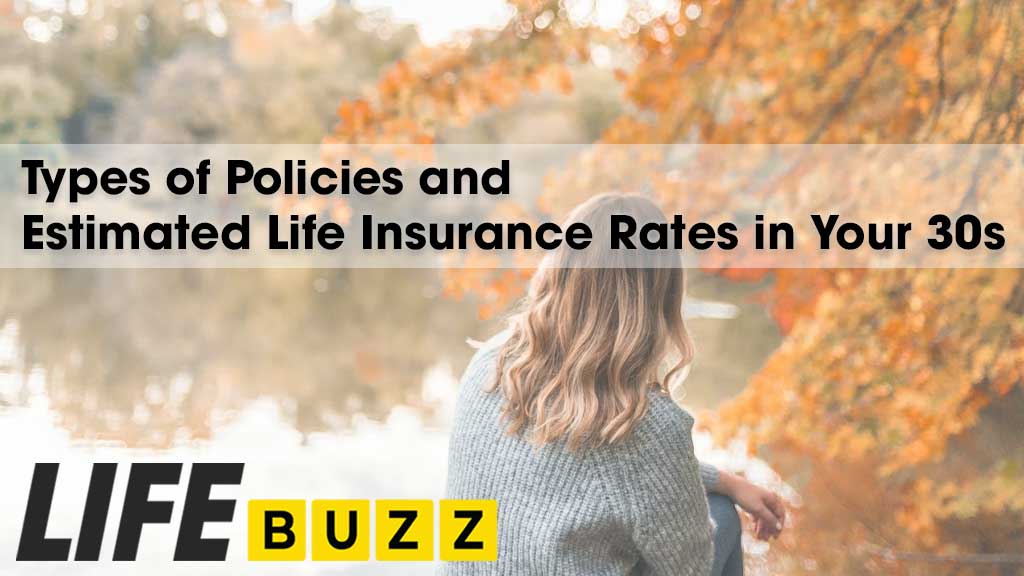If you’re a Canadian in your 30s, now is the time to get serious about securing life insurance. Your 30s are when insurers offer the most competitive premium rates for healthy adults. Locking in coverage now guarantees your insurability for the long run. This guide will provide an overview of everything you need to know as a Canadian to get the most affordable life insurance rates in your 30s.
Why are Your 30s the Prime Time for Life Insurance in Canada?
In Canada, life insurers reserve the best life insurance rates for individuals under age 40 who are in good health. Premium costs start incrementally increasing every five years once you hit 30.
This makes your 30s the ideal window to lock in lifelong coverage or long-term policies spanning 10, 20 or 30 years. Canadians who obtain life insurance in their 30s benefit from lower premiums for decades compared to delaying until their 40s or later when rates climb higher.
Getting life insurance in your 30s also guarantees your insurability before any potential health changes. If you wait until later in life and develop any medical conditions, Canadian life insurers may decline your application, restrict coverage, or hit you with much higher premiums.
Many Canadians find they struggle to get life insurance after being diagnosed with a chronic illness or disease in their 40s or 50s. Don’t get caught without coverage during your prime insurance years.
Why Do You Need Life Insurance in Your 30s?
There are a few major life events and financial changes that create the need for life insurance for Canadians in their 30s:
- Getting Married – You may want coverage to provide financial stability for your spouse in case something unfortunate happens to you prematurely. This is especially important if you are the primary income earner.
- Buying a Home – Life insurance enables your remaining mortgage balance to be paid off so your family doesn’t lose their home if you pass away.
- Having Children – Your death benefit provides money to cover everyday expenses and childcare costs in Canada, as well as saving for your children’s college or university education if you’re no longer around.
- Taking on More Debt – Your policy’s payout can pay off student loans, auto loans, credit cards, lines of credit and other debts that would otherwise overburden loved ones.
- Saving for Retirement – Adding life insurance to your retirement planning helps ensure your hard-earned retirement savings and Registered Retirement Savings Plan (RRSP) gets passed on to beneficiaries should the unexpected occur.
For most Canadians, their 30s are the first time they seriously consider getting insured to protect dependents and safeguard themselves from potential financial hardships if they are no longer around. The time is right to secure coverage.
Key Factors that Influence Life Insurance Rates in Your 30s

In Canada, life insurers assess your risk profile and life expectancy when determining your premiums. The key factors that impact life insurance rates for applicants in their 30s include:
Your Exact Age
Your specific age makes a major difference in life insurance rates, even within your 30s. Premium costs incrementally increase with every year of age as your mortality risk rises. A healthy 35-year-old Canadian will pay noticeably more than an equally healthy 30-year-old for identical coverage.
Your Current Health Status
Your current health conditions and medical history are major rating factors that the insurers take into account. Any illnesses you have, symptoms you’re experiencing, or medications you’re taking will likely lead to higher premiums. Insurers thoroughly review your health records, and you are required to have a recent medical exam.
See also: What is Considered a Pre-existing Condition?
Your Family Health History
If heart disease, cancer, diabetes, or other hereditary conditions run in your family, it signals a higher risk to insurers. Having close relatives who passed away prematurely or developed serious illnesses will mean paying higher premiums for life insurance coverage.
Your Lifestyle Habits
Certain lifestyle choices and habits like smoking or vaping, heavy alcohol consumption, drug use, and high-risk hobbies will drive your rates up in Canada. Hazards like not wearing a seatbelt or motorcycle riding also fall into this category.
Your Driving History
Insurers will check your Canadian driving record. A lengthy history of speeding tickets, at-fault accidents, license suspensions, DUIs, or reckless driving charges will lead to much higher life insurance rates. Too many infractions may result in your being declined.
Your Career
If you work in high risk occupations with higher chances of death or injury, such as mining, forestry, construction, or as firefighters, pilots, or police officers, expect to pay considerably more for life insurance than Canadians with typical office jobs.
Your Hobbies and Activities
Canadian life insurers will inquire about how you spend your free time. Thrilling hobbies or extreme sports enthusiasm, like scuba diving, rock climbing, skydiving, or other high-adrenaline pursuits, may bump up your premiums, especially if you engage frequently.
Types of Policies and Estimated Life Insurance Rates in Your 30s

The two most popular types of life insurance policies for Canadians are term and whole life. Here are estimated rates for men and women in their 30s seeking different amounts of coverage.
Term Life Insurance Rates In Your 30s
Term life insurance provides coverage for a set period of time, typically 10, 20, or 30 years. It only pays out a death benefit if you pass away during the term. Term life offers affordable rates, especially when you’re younger and healthier in your 30s.
Here are sample 10, 20, and 30-year term life rates for Canadians in their 30s:
10 Year Term
| $250,000 Coverage | $500,000 Coverage | $1,000,000 Coverage | |
|---|---|---|---|
| Male, Age 30 | $18 per month | $27 per month | $45 per month |
| Female, Age 30 | $16 per month | $24 per month | $40 per month |
| Male, Age 35 | $22 per month | $34 per month | $56 per month |
| Female, Age 35 | $19 per month | $29 per month | $48 per month |
Full review: Term 10 Life Insurance
20 Year Term
| $250,000 Coverage | $500,000 Coverage | $1,000,000 Coverage | |
| Male, Age 30 | $26 per month | $40 per month | $68 per month |
| Female, Age 30 | $23 per month | $36 per month | $60 per month |
| Male, Age 35 | $32 per month | $49 per month | $83 per month |
| Female, Age 35 | $28 per month | $43 per month | $72 per month |
Full review: Term 20 Life Insurance
30 Year Term
| $250,000 Coverage | $500,000 Coverage | $1,000,000 Coverage | |
| Male, Age 30 | $39 per month | $60 per month | $100 per month |
| Female, Age 30 | $35 per month | $54 per month | $90 per month |
| Male, Age 35 | $47 per month | $73 per month | $123 per month |
| Female, Age 35 | $42 per month | $65 per month | $109 per month |
Full review: Term 30 Life Insurance
*Rates are estimates only for healthy non-smokers with no major medical issues. Actual quotes will vary based on personal factors.
Whole Life Insurance Rates In Your 30s
Whole life insurance provides permanent lifetime coverage as long as you keep paying your premiums. It builds cash value that you can borrow against. Monthly rates start higher but remain fixed for life.
Here are estimated whole life rates for Canadians based on different coverage amounts (premium duration: Pay to age 90):
| $100,000 Coverage | $250,000 Coverage | $500,000 Coverage | |
| Male, Age 30 | $131.27 per month | $310.96 per month | $621.93 per month |
| Female, Age 30 | $129.44 per month | $306.23 per month | $612.46 per month |
| Male, Age 35 | $145.80 per month | $347.44 per month | $694.89 per month |
| Female, Age 35 | $141.64 per month | $336.89 per month | $673.79 per month |
| Male, Age 39 | $154.08 per month | $367.94 per month | $735.88 per month |
| Female, Age 39 | $152.55 per month | $364.30 per month | $728.60 per month |
How To Get the Best Life Insurance Rates in Your 30s

The key to locking in the most affordable life insurance rates in your 30s is shopping around. Here are tips to secure the lowest premiums:
- Compare Quotes – Always get policy quotes from a minimum of 3-5 different Canadian insurers and brokerages. Their rates can vary widely for the same coverage.
- Consider Term Lengths – In some cases, longer terms like 30 years offer better rates than shorter 10 or 15-year policies for Canadians in their 30s.
- Ask About Discounts – You may qualify for lower rates through your employer, alumni associations, professional groups, or by bundling multiple policies.
- Pay Annually – Opting to pay your full premium annually avoids monthly billing fees that can drive up the overall cost.
- Improve Health – For Canadians who smoke, lose some weight, or have health issues, taking steps to get healthier may lead to improved rates later on.
- Raise Deductibles – On permanent life insurance plans, choosing a higher deductible amount lowers the premium.
- Leverage a Broker – An independent broker shops multiple insurers and digs up Canada’s best rates for you.
When Should You Lock In Life Insurance Rates in Your 30s
The ideal window to lock in life insurance rates is while you’re under 40 and in good health. Purchasing coverage anytime in your 30s guarantees your insurability should your health falter down the road.
It also secures the lowest premiums for the entire term of your policy. Your rates will remain steady regardless of future health changes.
With whole life insurance, getting in early while you’re younger avoids potentially higher rates if you delay applying until later ages. Your fixed premium is set for life.
Canadians who wait until their 40s or later risk declining health, higher rates, rejections from some insurers, and coverage exclusions. Don’t delay – act in your 30s.
Want to learn more about how life insurance rates change as you age? Our guides explain exactly how premiums increase each decade from your 20s to 60s and beyond. We break down average costs by age and gender so Canadians can understand how to lock in savings by buying early. Get the full picture and affordable rates for your stage of life:
- Best Life Insurance Costs for Ages 20-29
- Best Life Insurance Rates For Ages 40-49
- Life Insurance for Seniors Over 50 in Canada
- Life Insurance for Seniors Over 60 in Canada
- Life Insurance for Seniors Over 70 in Canada
How Can an Independent Broker Help Canadians Get Insured in Their 30s?
Partnering with an independent broker who works with a range of Canadian insurers is wise. An independent broker will compare policy quotes across multiple insurance carriers to find you the best fit and most competitive rate.
Rather than just looking at one company and independent broker shops, your case should be across 10+ insurers licensed in Canada.
A broker also guides you through the entire process, including:
- Determining the right policy type and coverage amount
- Comparing quotes from a wide range of Canada’s top insurers
- Accurately filling out paperwork and applications.
- Securing you the best rate class through underwriting
- Ongoing policy management and updates
Canadians in their 30s who leverage an independent broker pay less for their life insurance coverage.
If you’re a Canadian in your 30s, now is the prime time to secure affordable life insurance coverage. Shop different policy types, terms, and multiple insurers. Consider your specific financial needs and leverage an independent broker to customize options for your situation.
Act now while you’re young and healthy to guarantee your insurability and the lowest rates. Contact a top independent brokerage such as LifeBuzz if you need guidance in obtaining the best life insurance policy and premiums as a Canadian in your 30s. The time is right to get protected.
Frequently Asked Questions (FAQs)
Q: How do life insurance rates in your 30s compare to rates in your 20s in Canada?
A: Life insurance rates in your 30s will be higher than rates in your 20s for the same coverage, as rates increase with age due to higher mortality risk. However, rates in your 30s are still low.
Q: What are the average life insurance rates in your 30s for $500,000 of coverage in Canada?
A: Average life insurance rates in your 30s for $500,000 of 20-year term coverage are about $30 per month for a healthy, non-smoking male and $25 per month for a female.
Q: How long can you lock in a life insurance rate in your 30s in Canada?
A: In Canada, you can lock in life insurance rates in your 30s for the duration of the policy term, which is typically 10, 20 or 30 years with term life insurance.
Q: At what age do life insurance rates in your 30s start to increase significantly in Canada?
A: In Canada, life insurance rates in your 30s start seeing more significant increases around age 35 and every five years thereafter as you enter a new age band.
Q: Who has the cheapest life insurance rates in your 30s - whole life or term life?
A: For Canadians in their 30s, term life insurance offers significantly cheaper rates than whole life insurance in most cases.
Q: How often do insurance companies raise life insurance rates in your 30s in Canada?
A: Life insurance rates in your 30s are guaranteed not to increase for the policy term you lock in. Rates will only increase at renewal if you choose to renew.
Q: Will my life insurance rates in my 30s differ between insurance companies in Canada?
A: Yes, life insurance rates in your 30s in Canada can vary significantly between different insurance companies, which is why it's critical to compare quotes.
Q: Can you get preferred life insurance rates in your 30s with pre-existing conditions in Canada?
A: In Canada, pre-existing health conditions will make it very difficult to qualify for preferred life insurance rates in your 30s, but coverage may still be available at standard rates.
Q: How do you find the best life insurance rates in Canada for those in your 30s?
A: Shop quotes from independent brokers who can compare rates from over a dozen insurers to find you the most competitive life insurance rates in your 30s in Canada.
Q: What medical tests do insurers require to give you life insurance rates in your 30s?
A: At a minimum, blood/urine samples and paramed exam. Sometimes, EKG, heart fitness exam or other tests for health issues confirm life insurance rates in the 30s.
Q: How long do you have to be smoke-free to get non-smoker life insurance rates in your 30s in Canada?
A: Most insurers in Canada require you to be smoke-free for 12 full months to qualify for non-smoker life insurance rates in your 30s.
Q: Will my driving record impact life insurance rates in my 30s in Canada?
A: Yes, too many tickets, accidents, DUIs or other infractions will likely lead to higher life insurance rates in your 30s in Canada.
Q: Can you still get life insurance in Canada if you are in your 30s and have a major pre-existing condition?
A: Yes, you can still get life insurance in your 30s in Canada with pre-existing conditions, but rates will be higher than for healthy individuals.
Q: Will rates on a $1 million policy be higher than a $500,000 policy for life insurance in your 30s?
A: Yes, a $1 million life insurance policy will have higher rates than a $500,000 policy in your 30s, all other factors being equal.
Q: How do you calculate how much life insurance you need in your 30s in Canada?
A: Look at income replacement, debts, final expenses, child costs and more when calculating life insurance needs in your 30s in Canada.
Q: Can you get life insurance rates in your 30s without a medical exam in Canada?
A: You can get no medical exam life insurance in Canada in your 30s but rates will be higher than fully underwritten policies requiring an exam.
Q: Will hazardous hobbies increase life insurance rates in your 30s in Canada?
A: Yes, hazardous hobbies like scuba diving or rock climbing will likely lead to higher life insurance rates in your 30s in Canada.
Q: How long do life insurance rates in your 30s stay locked in for term policies in Canada?
A: Life insurance rates for term policies purchased in your 30s in Canada stay locked in for the entire term period, typically 10, 20 or 30 years.


